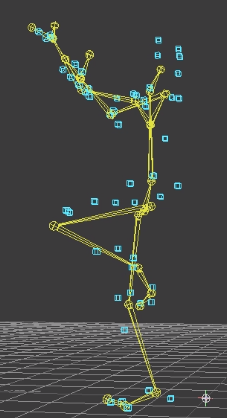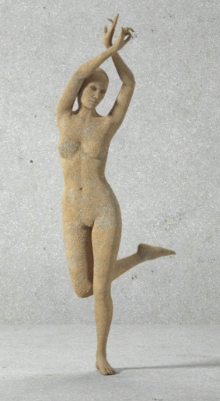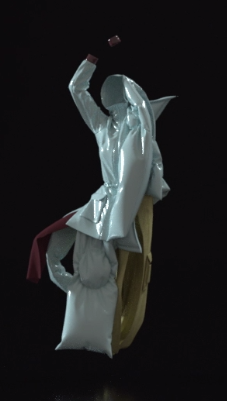About the Project ● Odissi ● Odissi and Motion-Capture Technology ● Composing the Odissi Body ● Analysis
About
This project is a theoretically informed stage for composing the dancing body in digital space. At its heart is Kaustavi Sarkar, a classical Indian dancer and dance scholar, who recorded a segment of her Odissi dance performance using motion-capture (mocap) technology. Once the movement data was captured, she explored a range of choices for translating the moving body in 3D simulation, joined by collaborators in professional animation, fashion design, and multimedia scholarship. We investigate four representations ("Skeletal", "Avatar", "Stone", and "Cloth") of Kaustavi's recorded movement data and explore these variations' affordances and constraints as avatars for the embodied Odissi dancer. These performances are framed by Kaustavi's reflections on her experience as both dancer and digital composer, with additional reflections from other collaborators ("Process") and a consideration of the issues at stake in capturing and representing the Odissi dancing body ("About").
In analyzing these renditions, we complicate the simplistic understanding of the Odissi body as historical and motion capture technology as contemporary, given the complicated development of Odissi in the middle of the twentieth century retrospectively attributing itself a two-thousand-year-old history for political and nationalist ideals (Banerji, 2012). Without necessarily foregrounding the temporal disjuncture between ancient movement and progressive technology, we hope to understand the varying ways in which movement influences the digital environment through modes of shaping bodies, costume, as well as space. In that vein, although we appreciate our animation collaborators' perspectives and creative expertise, we simultaneously vet their intentions to explore a “modern look” with a slightly critical bent so that we prevent ourselves from reorientalizing the historical and cultural body with the forces of western technology.











